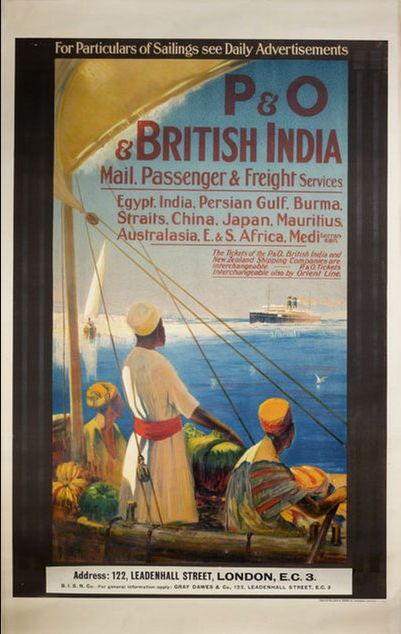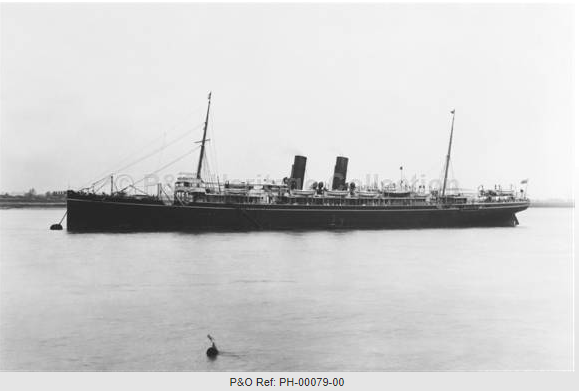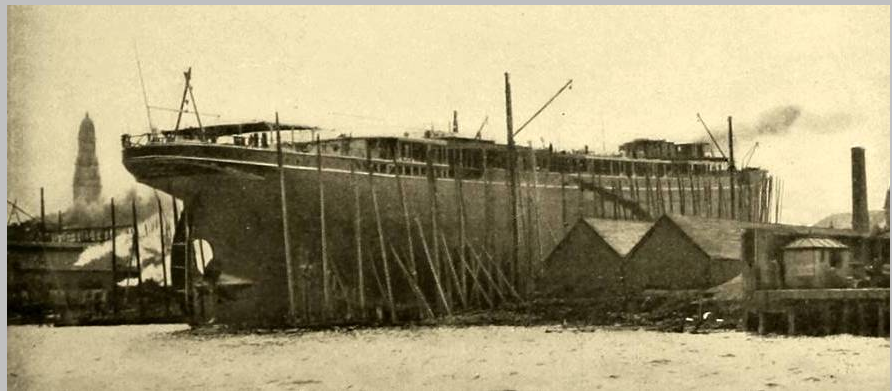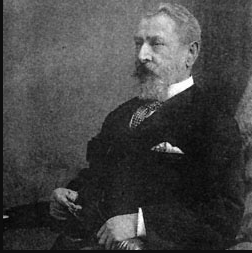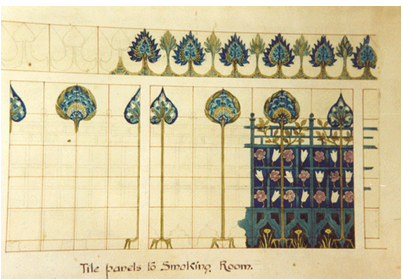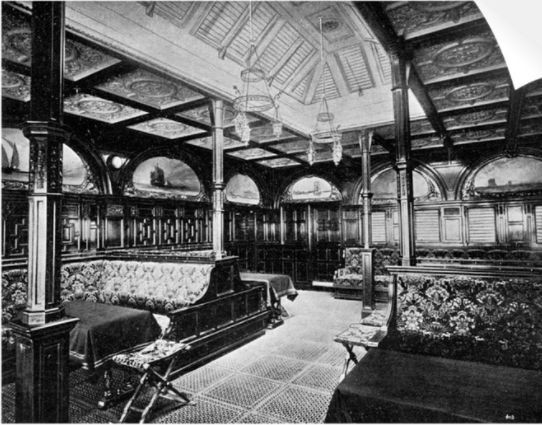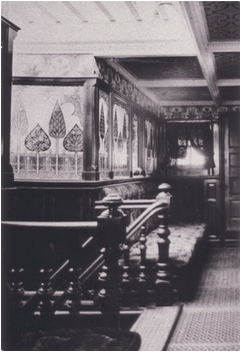Part 3 : The Sister Ships
This poster is undated - probably around 1915.. The ship in the distance is one of the Egypt Class sister ships. My grandfather, Jimmy, sailed from Tilbury to India on one of them, the SS Arabia. The poster powerfully suggests the enchantment of heading East at the beginning of a new millennium.
THIS POST FOLLOWS ON FROM PREVIOUS POSTS recording a 1907 trip that took my grandfather, Jimmy Steven, around the world.
I expected to put my grandfather Jimmy on his ship and start the voyage, until my shoulder-dwelling left-ear muse, insisted that first, I check out the SS Arabia.
Boarding ship is an uncanny transition. Stepping off terra firma overrides our innate sense of self-preservation. And historically, long sea voyages to Britain’s burgeoning Empire had not been without peril and were certainly uncomfortable.
Yet the 20th Century brought confidence afloat as steel and steam took over from wood and sail; while on land, growing prosperity made life a lot more comfortable and convenient.
Well-being wrought a change of sea-psyche; pilgrims and explorers might have relished starting their hardships from the moment they set foot on board, not so travellers in the new millennium who did not wish to make too many sacrifices.
The SS Arabia in the Thames near Tilbury. “She was elegant - long and sleek. Her hull, twin funnels and masts were fashionably painted all in black.”
The SS Arabia was not a broad or big ship - she was elegant, long and sleek. Her hull, twin funnels and masts were fashionably painted all in black.
P&O was proud of the quality of its passenger list. There were only two classes on the SS Arabia – wealthy tourists, businessmen, Indian Army officers and colonial officials, travelled in First; while clergymen, missionaries, schoolteachers and Indian retainers travelled in Second.
SS Arabia was the fourth of a sister ship quintette. The five P&O ‘Egypt Class’ liners were launched between 1896 and 1900 to service the line’s India and Australia routes. SS Arabia came after SS India, SS China and SS Egypt and before SS Persia. The SS Arabia and three of her sister ships were built by Caird & Co, a shipyard at Greenock on the Clyde. Jimmy would have known that – his firm might even have supplied some of the fittings. The odd-man out, SS China, was built in Belfast by the same yard that launched the ill-fated SS Titanic, 15 years later.
Launch of SS India in 1896, the first of the Egypt Class sister ships - built by Caird & Co, Greenock on the Clyde.
P&O were confident in a competitive market knowing their ships were fitted with the most modern conveniences of the day – electricity and refrigeration, a huge improvement in on-board convenience. And P&O had gone a step further – they’d ‘domesticated’ shipboard interiors. Typically, marine quarters were crafted by skilled shipbuilder’s carpenters – who, as we might expect - produced fine and practical, solid workmanship.
The company resolved that a more flamboyant, yet elegant, approach to décor would impart a sense of normality to life on the ocean waves. Comfortable passengers would be feel-safe passengers. And creating stylish surroundings in the era’s art-nouveau style would significantly enhance the reputation P&O fostered as the clear choice for the discerning traveller. Nothing too ostentatious, style and discreet elegance were the go.
Thomas Edward Collcutt, English architect 1840-1924 - He designed several iconic London buildings
The company turned to a leading architect of the Arts and Crafts Movement, Thomas Edward Collcutt. The famous designer was renowned for his rich and sumptuous interiors in public spaces. Just choosing Collcutt was a publicity coup.
The assignment didn’t come out-of-the-blue, Collcutt had worked with P&O for years, designing their offices and exhibition exhibits, so we can guess at many a conversation about the possibilities of floating his skills!
Collcutt’s concepts flowed through dining rooms, saloons, connecting corridors and stairways of the blueprints. Master craftsmen fashioned plasterwork, honed wood balustrades and panelling, fired ceramic tiles, constructed unique furniture and stitched upholstery to his vision. Every element in harmony. Every skill of the masterclass. Stained glass skylights, light-fittings, piano stools, armchairs and grand pianos – nothing was incidental to the vision.
P&O wanted each ship to differ enough to be distinctive, yet not lose the bond of sisterhood. They set the decorative theme. Stability from which to anticipate the promise of enticing encounters en route. Departing England’s green and pleasant land through the Suez Canal to India and the Orient, past smoking volcanos, stormy weather and pastoral bliss, the tigers and elephants of India and beyond the shimmering promise of exotic fruit, palm fronds, sailing junks and picturesque Chinese panoramas.
William De Morgan - 1839-1917 - the most important ceramic artist of The Arts and Crafts Movement.. Look up his work, and you may find it familiar! I delight in his images.
“De Morgan has a progressive and resourceful mind, accepting the ancient and simple traditions of the crafts, but not content to rest there” – May Morris (Daughter of designer William Morris who followed in her father’s footsteps designing embroidery and jewellery.
Collcutt’s master stroke was engaging William De Morgan*, designer of tiles and ceramics whose vivid portrayal of nature, heavily influenced by Turkish and Islamic art, was strongly trending. To fulfil his brief from Collcutt, he composed individual ceramic panels and tiles for the sisterships – carefully glazed, wonderful works of art to depict the voyage theme. They were not just delightful but practical – especially for the smoking room and corridors, and seamlessly connected with the rest of Collcutt’s design.
(Seamlessly perhaps but not soundly according to one account – I am not sure from which ship for De Morgan’s ceramics featured on twelve P&O liners - of an executive being showered with De Morgan’s tiles when the ship was buffeted in a fierce storm!)
P&O were on the money for history looks back to the period between the 1900s and the end of the 1930s as the golden age of ocean travel when the pleasure of the journey became as important as the destination. The ratio of ladies to gentlemen increased along with a raft of shipboard conventions and dress codes. Yet, everyone knew, moonlight, wind in the hair and salt in the air, were conducive to amour, enchantment and shipboard flirtations which often left decorum as far behind as the disappearing shoreline.
It was when I first came across the tilework of De Morgan that I wanted to look inside SS Arabia. Once I was in, I felt intoxicated – all at sea. I longed to trail my hands along carved banisters, put my palms on the cool tiles and run my fingers through the velvety pile of the moquette upholstery. I craved a deckchair in the moonlight, the flicker of a lighter and, yes, a warm caress.
One of the De Morgan panels from the SS Arabia
See – as a phantom, I’ll never bother you and freak out your future, I’ll go the other way, back to the golden age of ocean travel, or even further, to sailing barques and brigs, clippers and carracks. I’ll kick up my heels, befriend the ship’s cat, raise hell. And when the going get’s rough, well, I can cut loose and visit you.
And now reading over Jimmy’s letters, I can imagine him at dinner in a saloon of magnificent appearance – spacious with cathedral loftiness…, or walking the deck greeting ladies in deckchairs, or in the smoking room, which some said was the loveliest place on the ship.
This is the smoking room of the SS India, a sister ship to the SS Arabia.
A passageway on the SS Arabia. Note De Morgan’s tile panel in the background.
I like to think that Jimmy appreciated all of it and I am fairly confident that he did, given that Glasgow was a prominent centre of decorative design – and had developed its own ‘Glasgow Style’ at the time. Who knows, perhaps the very attention to detail on the SS Arabia, influenced how he saw his destinations and piqued his interest in the curios and antiques he collected.
Dining room on SS India - sister ship of SS Arabia. The dining chairs were fixed to the deck with rotating seats. Dining was at long communal tables. It was the same in many restaurants of the day.
Alas those marvellous interiors have all but been lost to us. Only a few contemporary photographs and descriptions remain. In 1916, during WW1, SS Arabia, still plying passengers back and forth from India, was sunk in the Mediterranean in broad daylight by a German torpedo. The sinking of a passenger liner, Germany conceded, was a regrettable mistake. The commander of the U-boat explained he expected passenger liners to be painted white, not black, and that the bright clothes (Of the women and children lining the railings) suggested to him "workmen soldiers… coloured persons in their national costumes," By implication, a troop ship from the British Empire, so he, "considered himself justified in attacking the steamer without delay and sank it."
Eleven seamen were killed but miraculously, all the passengers survived. One eyewitness watched hundreds of wooden deck-chairs float to the surface as the SS Arabia slipped stern first into a tranquil sea.
Of the five sister-ships, three were torpedoed during WW1.** SS Egypt sank in the English Channel after being rammed by a French freighter in thick fog in 1922 with the loss of 87 Lives and a £1 million in gold bullion, the recovery of which is really good read!*** Only SS China made it to a ships graveyard when she was scrapped in Japan in 1928.
_________________________________
*De Morgan’s first commission for a ship interior was, I think, to supply tiles for the Tsar of Russia’s yacht, Livadia, launched in Glasgow in 1880. Although perhaps De Morgan was happy to leave that fame behind for while the interiors look gorgeous, the radically-novel ship was a complete lemon and the Tsar was assassinated ten months later.
** SS Persia- another of the sister ships torpedoed in the Mediterranean - features in Alan Wren’s book, ‘The Ambush of the SS Persia’ . Nick Messinger of The Old P&O Line website (See link below) recommends it as an excellent read.
***https://www.maritimequest.com/daily_event_archive/2005/may/20_egypt.htmhttp://www.shipwreckfilms.co.uk/page47.html
My thanks for information and photographs for this blog go to:Claire Longsworth, The Sister Ships,
The De Morgan Foundation https://www.demorgan.org.uk/
Nick Messinger of The Old P&O Line - http://pandosnco.co.uk/
